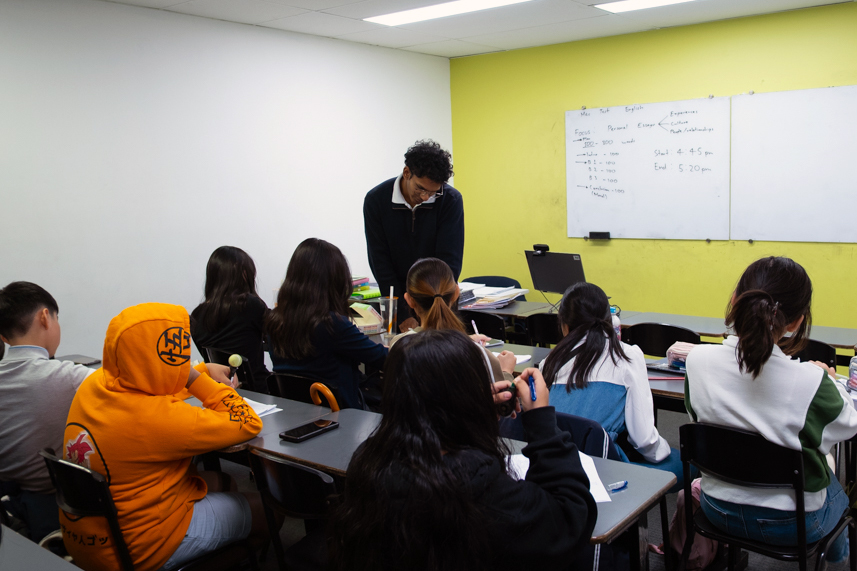Learning is a natural and essential part of growing up. From the earliest years, children are filled with curiosity, and they are eager to explore, question, and discover how the world works.
However, over time, this innate desire to learn can fade, particularly within rigid educational systems that prioritise standardised assessments over meaningful engagement. As a result, what begins as wonder can turn into worksheets. Questions often become quotas, and learning becomes something to get through rather than something to look forward to.
Supporting children to enjoy learning is not simply a lofty ambition. Instead, it is a powerful way to build a foundation for both academic growth and lifelong wellbeing. While there is no single solution, research and experience show that with the right strategies, we can help children reconnect with the joy of learning and reignite their spark.

Understanding Motivation and How to Get Kids to Enjoy Learning
Motivation plays a crucial role in how children engage with learning. In fact, cognitive science points to two main types:
- Intrinsic motivation comes from within and involves engaging in an activity for its own sake because it is interesting, satisfying, or meaningful.
- Extrinsic motivation comes from outside sources, such as rewards, grades, or fear of failure.
Importantly, decades of research confirm that intrinsic motivation is more closely linked to deep learning, creativity, resilience, and long-term academic success.
At the heart of intrinsic motivation is the Self-Determination Theory, which identifies three fundamental psychological needs that must be met for motivation to flourish: autonomy, competence, and relatedness. Consequently, when children feel a sense of ownership over their learning (autonomy), believe they can succeed (competence), and feel connected to those around them (relatedness), they are far more likely to engage wholeheartedly and persist through challenges.
In the sections that follow, we share five practical, evidence-informed strategies that educators and caregivers can use to help children thrive and rediscover the joy of learning.

1. Nurturing Curiosity and Autonomy
Children are naturally curious, yet they need space and encouragement to explore their interests. Moreover, when learning becomes overly prescriptive, their motivation can suffer. For this reason, giving children choices in their learning, wherever possible, is a highly effective way to build engagement.
Simple opportunities such as choosing a project topic, deciding how to present their findings, or exploring a personal area of interest can have a meaningful impact. In addition, these choices, even within the boundaries of the curriculum, help children feel empowered and invested.
Inquiry-based and project-based learning approaches are particularly effective. For example, a child interested in insects might explore local ecosystems, integrating science, reading, and environmental studies. Similarly, a project focused on designing a community garden could involve maths, sustainability, design, and teamwork, offering both challenge and relevance.
Try This at Home or School:
- Ask your child to choose a mini-project topic based on something they are curious about, such as native animals, space, or their favourite sport. Give them a week to research and present it in any format they choose.
- Set up a Wonder Wall in the classroom or at home where children can write down questions they have during the week. At the end of the week, choose one question to explore together.
- Offer two or three options for how to complete a task (e.g., drawing, building, writing) and allow the child to decide which format suits them best.

2. Building Competence Through Challenge and Feedback
When children believe they can succeed, learning becomes something they enjoy rather than something they simply endure. Furthermore, that sense of “I’ve got this,” also known as competence, plays a huge role in how they approach new challenges. As a result, when they feel capable and see progress, they are more likely to persevere and take pleasure in their learning.
On the other hand, competence does not grow when tasks are too easy or when feedback is vague. In other words, it is about striking the right balance — tough enough to be interesting, but not so tough that it feels impossible.
This balance is what educational psychologist Lev Vygotsky described as the Zone of Proximal Development (ZPD). Simply put, the ZPD is the space between what a learner can do independently and what they can do with support. Therefore, when we teach within this zone, learning becomes more effective and real growth happens.
To make the most of this zone, children need scaffolding — temporary support from a teacher, parent, or peer. Think of it like training wheels: the child still does the pedalling, but we help with balance until they can ride solo. As they grow stronger and more confident, that support is gradually removed.
Feedback is equally important. Encouraging feedback is not just about being positive; rather, it is about being specific and actionable. For example, instead of saying, “Nice work,” try:
“Your opening sentence really grabbed my attention. Can you bring that same energy to your conclusion?”
Try This at Home or School:
- Create a Challenge Jar: Fill a jar with slips of paper containing slightly harder tasks related to current learning.
- Design a Learning Quest Map: Create a visual path of small milestones toward a bigger learning goal.
- Give them the Coach’s Clipboard: Ask your child to give themselves feedback by pretending they are the coach.
- Keep a Victory Log of specific improvements and revisit it regularly to reinforce progress.

3. Creating Emotionally Supportive Environments
Learning is not just about the brain; the heart plays a big role too. Therefore, children need to feel emotionally safe before they can fully engage with learning.
When classrooms or homes are marked by fear, exclusion, or perfectionism, learning tends to shut down. To prevent this, focus on building strong, supportive relationships. When educators and caregivers show genuine interest in children’s ideas, celebrate effort over results, and normalise mistakes, they help create a culture of trust and belonging.
These simple habits build what psychologists call relatedness, a key ingredient for intrinsic motivation. Consequently, when children feel connected, they care more — not only about what they are learning, but also about the community around them.
Try This at Home or School:
- Start a Feelings Forecast ritual: Ask children to share their emotional “weather” at the start of the day.
- Create a Courage Wall for posting moments of persistence and bravery.
- Offer a Quiet Corner for calming and re-engaging.

4. Embracing Play and Exploration
Play is often linked with early childhood, but its value extends into all age groups. Far from being a distraction, play is a powerful form of cognitive engagement.
It supports problem-solving, creativity, collaboration, and language development. In addition, in learning environments, play can include role-playing historical events, building prototypes, or solving puzzles through games. For older students, it might mean exploration, problem-based tasks, or collaborative simulations.
Try This at Home or School:
- Act out a scene from a book or simulate a debate on a real-world issue.
- Play maths games with dice or cards.
- Provide open-ended materials for imaginative building projects.

5. Making Learning Relevant to Real Life
Children are more engaged when they see how learning connects to their lives. In fact, constructivist learning theory shows that lessons are most effective when they build on what students already know and care about.
Examples include:
- Teaching measurement through cooking
- Exploring statistics through sports analysis
- Using persuasive writing to support a local cause
Similarly, community-based projects help children see themselves as contributors to the world around them, which increases their sense of purpose. Therefore, connecting lessons to real-life contexts can have a powerful impact on motivation.
Try This at Home or School:
- Launch a Mini Life Project such as planning a family meal on a budget.
- Create a Why It Matters board linking subjects to real-world examples.
- Involve children in family decision-making tasks that require literacy, numeracy, and critical thinking.
Final Thoughts on How to Get Kids to Enjoy Learning
Helping children enjoy learning is not about lowering expectations or entertaining for the sake of it. Rather, it is about creating conditions where motivation, meaning, and connection can grow.
While not every lesson will be a favourite, we can build environments where every child feels encouraged to explore, empowered to grow, and supported to succeed in their own way. Ultimately, our greatest resource in education is not technology or curriculum — it is the spark of curiosity in each child. Therefore, keeping that spark alive is one of the most meaningful responsibilities we share.
For more insights into how to motivate learners, see Edutopia’s guide to student engagement.
